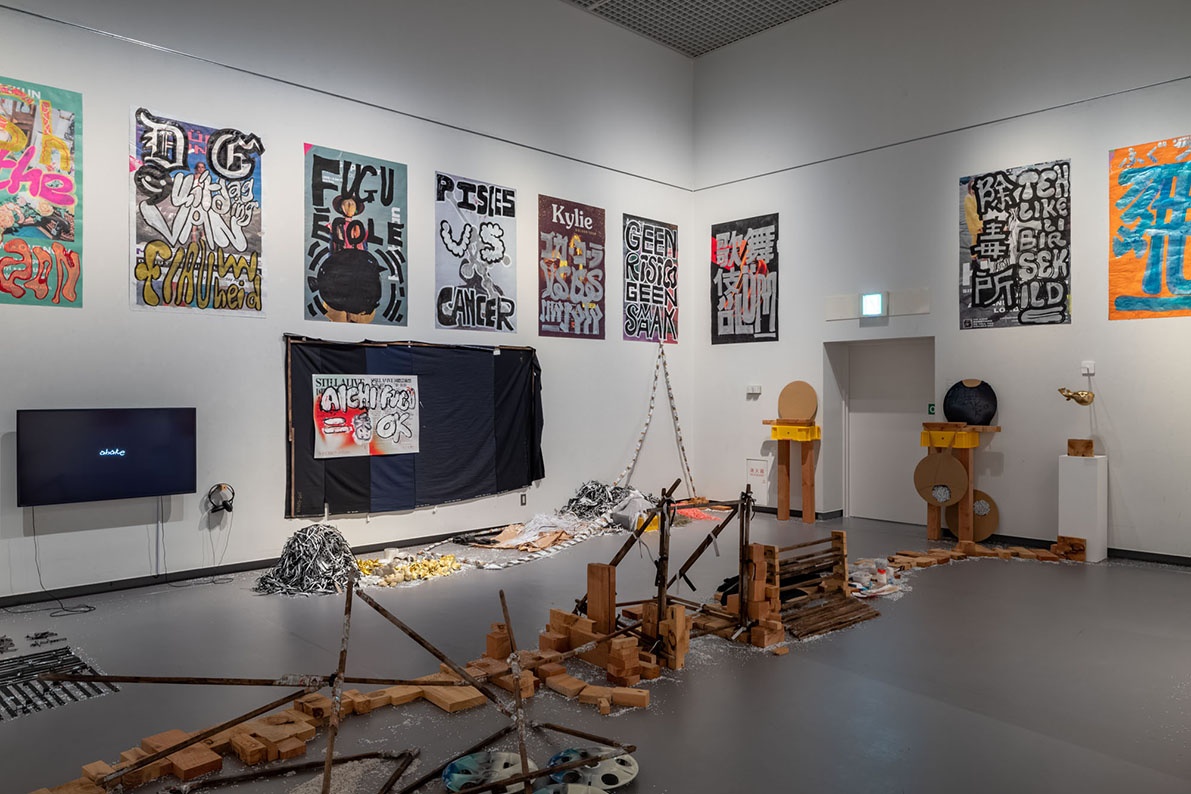LEARNING
Åbäke & LPPL
“Fugu Gakko (School)”
Åbäke is a design unit/collective formed in London in 2000 by four members who studied visual communication and graphic design. The “Fugu Gakko” project by Åbäke & LPPL can be traced back to the unusual discovery of a blowfish (fugu in Japanese) off the Mediterranean coast of Turkey in 2003.
The iteration of Fugu Gakko presented at Aichi Triennale 2022 is based on the 2018 Istanbul presentation, developed further for Aichi. Taking the issues raised by the blowfish as a starting point, the projectʼs objective is the acquisition of new viewpoints that cut across fields such as environmental issues, geopolitics, anthropology, and contemporary art. Discussion, research, and encounters of different types often lead to subjects that would not usually be thought of as related to blowfish. The exhibition space will be transformed over the course of the Triennale as Åbäke, LPPL, and the researchers learn from each other how to utilize a variety of materials and skills in creative ways.
- Selected Works & Awards
- In 2021, The Fugu School Part 1 2021 was held at the Clear Gallery Tokyo in Tokyo. The Collective also jointly curated the exhibition Which Mirror Do You Want to Lick? with Sofie Dederen and Radim Peško at the University Art Museum, Tokyo University of the Arts in collaboration with students from Tokyo University of the Arts.

- Installation view at Aichi Triennale 2022
- Fugu Gakko, 2022
- Photo: ToLoLo studio
Reflection by the Artist:
“Learning Artists and Non-learning Artists”
Text by Maki Suzuki
On the door of my studio hangs the label: “Artist Learning” which I got from the Aichi Triennale. This pass is a badge of honour that let me move freely around the art venues in September. Every time I read it, I understand “Artist learning”, which I believe is an essential condition to practicing art. An artist learning seems obvious. An Artist who already knows would be high profile but most likely an idiot. On the other hand, I know this label was different from the artists who presented a work in the non learning parts of the building. The “non-learning” Artists.
The education department in most Art centres are not considered as the highest form of Art. Some places take it seriously. Historically we have Beuys who is highly considered and also a teacher. We are perhaps still in awe of the genius, the individual. Essentially the difference might be in the risk-taking of working with others or shall we call them participants. In my experience, some of the best works have come out of working with students or participants. Equally, some bad Art has resulted in similar situations. It is a question of commitment. This is not for everyone.
More specifically Fugu Gakko is a project that presents itself as a school and I have been asked many times how to join the school. It was not obvious to them the idea of a school is primarily for oneself. It came with a need to learn, the realisation that one doesn't know and never will. The fun is in the quest. The fun and the seriousness of commitment.
In Aichi I have learned to try harder, especially with others. The privilege to practice Art makes it both important and futile. Who were the people who trusted me and the learning team (Nov and Takayuki) to use their precious time to do something nobody knew, without any goals or expectations except that perhaps something can be produced, if an event or an object but more importantly the uncertainty as a group activity.


![STILL ALIVE Aichi Triennale 2022, July 30 (Saturday) to October 10 (Monday, public holiday), 2022 [73 days]](/2022/en/img/title-logo-date-en.svg)
